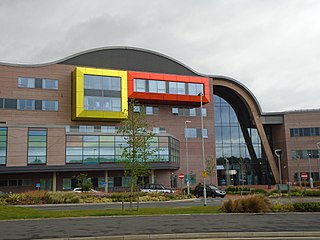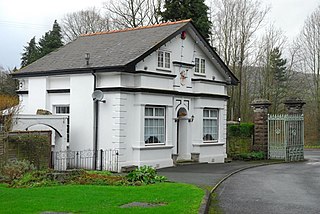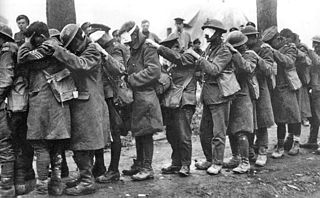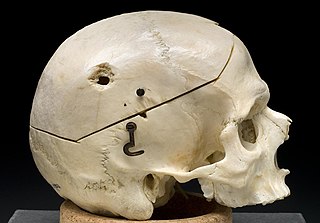
The University of Pittsburgh Medical Center (UPMC) is a $19 billion integrated global nonprofit health enterprise that has 85,000 employees, 40 hospitals with more than 8,000 licensed beds, 600 clinical locations including outpatient sites and doctors’ offices, a 3.4 million-member health insurance division, as well as commercial and international ventures. It is closely affiliated with its academic partner, the University of Pittsburgh. It is considered a leading American health care provider, as its flagship facilities have ranked in US News & World Report "Honor Roll" of the approximately 15 to 20 best hospitals in America for over 15 years. As of 2016, UPMC is ranked 12th nationally among the best hospitals by US News & World Report and ranked in 15 of 16 specialty areas when including UPMC Magee-Womens Hospital. This does not include UPMC Children's Hospital of Pittsburgh which ranked in the top 10 of pediatric centers in a separate US News ranking.

University Hospital of Wales (UHW) is a major 1,000-bed hospital in the Heath district of Cardiff, Wales. UHW is a teaching hospital of Cardiff University School of Medicine. Construction started in 1963 with the official opening in 1971. It was Europe's first fully integrated hospital and medical school at a cost of £22 million. The hospital is the third largest University Hospital in the UK and the largest hospital in Wales. The hospital was previously managed by Cardiff & Vale NHS Trust. In 2009 the Trust was dissolved and the hospital is now managed by Cardiff and Vale University Health Board.

Frenchay Hospital was a large hospital situated in Frenchay, South Gloucestershire, on the north east outskirts of Bristol, England. In 2014 it contracted to a few brain and head injuries services. It is managed by the North Bristol NHS Trust.

The Priory Group is a provider of mental health care facilities in the United Kingdom. The group operates at more than 500 sites with over 7,000 beds. Its flagship hospital is the Priory Hospital, Roehampton, which is best known for treating celebrities particularly for drug addiction. The Priory Group also manages schools, some for students with autism spectrum disorders.

Morriston Hospital is a 750-bed hospital located in Cwmrhydyceirw near Morriston in Swansea, Wales. It is managed by Abertawe Bro Morgannwg University Health Board. Alongside its role as a district general hospital, Morriston is a teaching hospital for medical students of Swansea University Medical School.

Alder Hey Children's Hospital is a children's hospital and NHS foundation trust in West Derby, Liverpool, England. It is one of the largest children's hospitals in the United Kingdom, and one of several specialist hospitals within the Liverpool City Region, alongside the Royal Liverpool University Hospital, Liverpool Women's Hospital, Liverpool Heart and Chest Hospital, the Walton Centre, Mersey Regional Burns and Plastic Surgery Unit, and Clatterbridge Cancer Centre.

Barry Hospital is a hospital on Colcot Road in Barry, Vale of Glamorgan, Wales. It is managed by the Cardiff and Vale University Health Board.

Royal Papworth Hospital is a leading heart and lung hospital, located in Papworth Everard in Cambridgeshire, England. It was home to the first successful heart transplant in the UK, the world's first successful heart, lung and liver transplant, and one of the world's first non-beating-heart transplants. Royal Papworth Hospital is due to move to new premises on the Cambridge Biomedical Campus in spring 2019.

H.M. Stanley Hospital was a community hospital in St Asaph, Wales. It was managed by the Betsi Cadwaladr University Health Board.
Brentford Community Stadium is a stadium currently under construction in Brentford, west London with a projected capacity of 17,250. It is planned to be the home of Brentford FC and London Irish RFC.

Blackberry Hill Hospital is an NHS psychiatric hospital in Fishponds, Bristol, England, specialising in forensic mental health services, operated by the Avon and Wiltshire Mental Health Partnership NHS Trust. The hospital also offers Drug and Alcohol Rehab inpatient services, and is the base for a number of Community Mental Health teams.
The National Health Mission (NHM) was launched by the government of India in 2013 subsuming the National Rural Health Mission and National Urban Health Mission. It was further extended in March 2018, to continue until March 2020.

David Scott Clark is a New Zealand Labour Party politician who is the Member of Parliament for Dunedin North. He is the Minister for Health. Previously he has been Opposition Spokesperson for Small Business and Economic Development.

Maindiff Court Hospital is a community hospital near Abergavenny, Monmouthshire. It is managed by the Aneurin Bevan University Health Board. Its most noted patient was Rudolf Hess, deputy to Adolf Hitler.
Betsi Cadwaladr University Health Board is a Local Health Board in north Wales. It is the largest health organisation in Wales, providing a full range of primary, community, mental health, and acute hospital services for a population of around 694,000 people across the six principal areas of north Wales as well as some parts of Mid Wales, Cheshire and Shropshire.

Ely Hospital was a large psychiatric hospital near Cardiff, Wales.

Worcestershire Acute Hospitals NHS Trust is an NHS trust which runs three hospitals in Worcestershire, England: The Alexandra Hospital, Redditch, Kidderminster Hospital and Treatment Centre in Kidderminster, Evesham hospital Burlingham ward in Evesham and the Worcestershire Royal Hospital in Worcester.

Brighton General Hospital is an acute general hospital on Elm Grove in Brighton, East Sussex. It is managed by Sussex Community NHS Trust. The main Arundel building is a Grade II listed building.

Bronglais Hospital is a community hospital in Aberystwyth, Wales. It is managed by the Hywel Dda University Health Board. It is the main teaching hospital for Aberystwyth University.






















